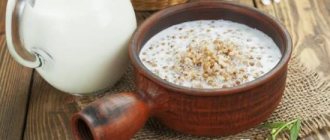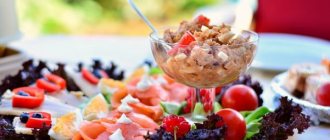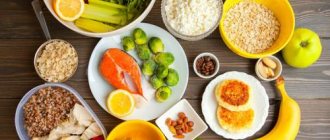“Children, drink milk and you will be healthy!” - sang in one famous song. The harsh truth is that for many people, consuming this product will only cause flatulence, abdominal pain and diarrhea. The reason is individual intolerance to milk sugar (hypolactasia), due to which they have to include only lactose-free products in their menu. This problem is very common - in regions with an East Slavic population it occurs in 16-18% of citizens, in Southern France up to 67% already suffer from it, and almost all African Americans and Indians of North America cannot fully digest milk. But among residents of Northern Europe (Dutch, Danes, Swedes, etc.) carriers of this disorder account for only 1-5%. Why does this happen and what should a lactose-free diet be like?
Lactose intolerance. Difference from milk protein allergy
Milk consists of macronutrients: proteins, fats and carbohydrates. Most often, its fats, unlike carbohydrates and proteins, do not cause unpleasant consequences, such as allergies and intolerances.
An allergy to milk can occur due to two types of biologically valuable proteins: calcium caseinate or casein, as well as whey proteins - albumin and globulins.
Interesting fact.
On average, 100 ml of cow's milk contains 3.2 grams of protein. Of these, 80-87% is casein, 10-12% albumin and 3-6% globulin.
While lactase intolerance to milk is associated with the carbohydrate lactose . The thing is that milk sugar is not absorbed by the body in its original form. Therefore, to break down this carbohydrate, a cleavage reaction is performed in the small intestine, involving the enzyme lactase , which results in the formation of two molecules - glucose and galactose. In this form, they are absorbed into the intestinal walls, after which they enter the general bloodstream and then into the liver. There they are used for the synthesis and storage of glycogen, which is fuel for processes occurring in the body.
In other words, lactose intolerance is a consequence of insufficient production of the lactase enzyme by the body.
When its production decreases or stops, lactose enters the large intestine, where, under the influence of bacteria, a fermentation reaction occurs, which produces an abundance of gases, and in addition, pain, cramps and loose stools occur.
If the consumption of dairy products continues with lactose intolerance, this can lead to changes in the intestinal microflora, prolonged duodenitis or functional disorders of the gastrointestinal tract.
Why does such intolerance occur? Most often, lactase deficiency depends on the following factors:
- Hereditary predisposition;
- Place of residence;
- Traditions of drinking milk.
Interesting fact.
Lactose intolerance in adults affects 25% of the population in northern Europe. Moreover, among the peoples of Africa, Southeast Asia, South and North America, its frequency reaches 95%.
It is important to understand that lactose intolerance can be either congenital or acquired.

Causes of hypolactasia
Lactose intolerance is a genetically determined insufficient digestion of milk sugar due to a reduced level of the digestive enzyme lactase. From an evolutionary point of view, mammalian milk is purely baby food, necessary for the development of a child during the first 1-2 years of his life. Therefore, initially, after a period of feeding, all human children naturally decreased or completely lost the ability to produce lactase.
However, with the development of animal husbandry (about 4-6 thousand years ago), the situation began to change. Peoples who raised dairy animals over time acquired a mutation in the gene responsible for the production of lactase, which became a serious competitive advantage in the struggle for survival. In many ways, it was the ability to consume fresh milk in adulthood that contributed to the widespread distribution of representatives of the Indo-European language family, which today includes most of the population of Europe, Asia, Australia and the Americas. But this mutation does not occur in all people - hence the cases of lactose intolerance.
Lactose intolerance in adults
Lactase deficiency in adults is divided into secondary and primary. If primary lactase deficiency usually manifests itself in childhood, then secondary lactase deficiency occurs under the influence of intestinal infections and other causes that cause damage to cells of the small intestine of various origins.
Lactase deficiency may be a low production of this lactase or a complete absence of the synthesis of this enzyme.
Symptoms of lactose intolerance
The main symptoms of lactose intolerance include:
- Loose stools or diarrhea;
- Bloating;
- Rumbling in the intestines;
- Gas formation;
- Abdominal pain.
These disturbances in the functioning of the gastrointestinal tract occur immediately or within 24 hours after drinking milk or dairy products.
It is worth noting that in the presence of intestinal dysbiosis, substances that are formed during the microbial breakdown of lactose in the large intestine have a toxic effect. This can cause general malaise, headaches, nausea and apathy.

How can you tell if your child is lactose intolerant?
Lactose intolerance in children is characterized by the following manifestations:
- Osmotic (“fermentative”) diarrhea after drinking milk or lactose-containing dairy products;
- Frequent, loose, foamy, sour-smelling stools;
- Stomach ache;
- Child's anxiety after taking milk);
- Increased gas formation in the intestines (flatulence, bloating);
- In young children, against the background of diarrhea syndrome, symptoms of dehydration and/or insufficient weight gain may develop.
If your child exhibits the following symptoms, you should consult a doctor.
Most often, when a child is diagnosed with lactase deficiency, a complete or partial exclusion of dairy products is recommended, depending on the degree of lactose intolerance.
If the child is breastfed, he is transferred to lactose-free formulas or plant-based formulas.
List of foods that those on a diet miss most
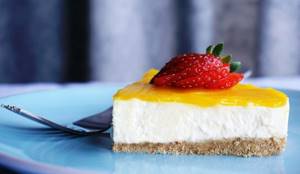
The leading positions were taken by:
- Cheese toast;
- Cheesecakes and muesli;
- Mashed potatoes;
- Banoffee dessert;
- Spaghetti carbonara;
- Pizza;
- Apple pie;
- Lasagna.
People who are losing weight also dream of banal macaroni and cheese, chocolate brownies, donuts, pudding, and eclairs. Respondents said that they also really miss bread in their diet, as well as pies and chicken nuggets.
Lactose intolerance - prohibited foods
If you are lactose intolerant, you should avoid not only those products in which its presence is obvious, but also carefully study the composition of products where it could potentially be present in hidden form.
Products containing lactose:
- Milk
- Cheese
- Yoghurts
- Cottage cheese
- Sour cream
- Milk chocolate
- Ice cream
- Butter
- Mayonnaise
- Sports nutrition
Products that may contain lactose:
- Bread, pasta, cookies and other baked goods
- Margarine
- Chips and other snacks
- Candies
- Breakfast cereals and cereals
- Soups and instant noodles
- Sausages and sausages
- Medications
- Liqueurs
- Bars
- Some drinks
It should be noted that in some people lactase deficiency is mild and they can consume low-lactose foods, fermented milk products and those dishes where lactose is in latent form (for example, baked goods), without experiencing any unpleasant consequences.

Simple recipes for a dairy-free diet for a nursing mother
Preparing dishes should take a minimum of time, so the fastest recipes are used.
Vegetable soup with oat flakes
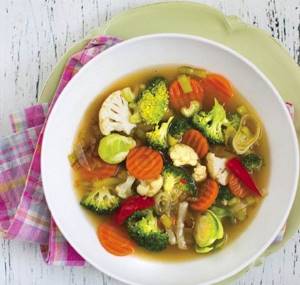
The composition may include any permitted vegetables. For example:
- pumpkin – 200 g;
- potatoes - 2 pieces;
- zucchini - one medium size;
- broccoli – a quarter of a head;
- celery root - a quarter of a small size;
- oatmeal – 3 tablespoons;
- salt to taste;
- chopped greens - a tablespoon.
Vegetables are cut into cubes and cooked for about 15-20 minutes until fully cooked. Then add the flakes and cook for another 7-10 minutes. After this, puree it with a blender and sprinkle with herbs.
Pumpkin porridge with rice in a slow cooker

- pumpkin – 100 g;
- rice – 100 g;
- carrots - one piece;
- vegetable oil - a tablespoon;
- salt to taste.
Lactose-free diet
When excluding dairy products from the diet, it is important to find a suitable replacement for them in order to replenish the necessary nutrients entering the body with them.
It is worth noting that today there are lactose-free dairy products. However, they are not always available in stores and are often more expensive.
Therefore, in this case, it is important to increase in the diet the amount of those products that can be an alternative to dairy, in terms of the content of vitamins and microelements such as: vitamin B2, vitamin A, D, B1, B12, calcium, potassium, phosphorus, magnesium, sodium, iron , fluorine, iodine.
In addition, do not forget that lactose, in the absence of lactose intolerance, is also beneficial for the body and performs the following functions:
- Plays the role of a prebiotic, stimulating the growth of beneficial bacteria;
- Participates in the synthesis of B vitamins;
- Affects the absorption of calcium, magnesium and other microelements and its own enzymatic activity;
- Is a source of energy.
Based on the above, we can conclude that with a lactose-free diet, for normal functioning of the gastrointestinal tract, it is necessary to include in the diet:
- Prebiotics - a substrate for the growth and reproduction of probiotics (bananas, onions and garlic, chicory, artichokes, sauerkraut, beans and whole grain cereals);
- Probiotics are beneficial bacteria (kombucha, sauerkraut, miso, kimchi, tempeh, pickles, lactose-free fermented milk products, plant milk yoghurts).
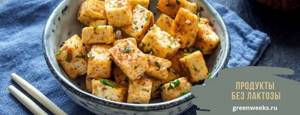
Lactose-free products
What can replace dairy products? The list is very extensive and varied.
Milk
Now there are many options for lactose-free cow's and plant-based milk, which can also be used for baking, desserts, added to coffee or tea, and consumed on its own.
Plant-based drinks can be made from grains, legumes and nuts. Very often, manufacturers add vitamin D, calcium and other vitamins and microelements to make the plant analogue more similar to the original animal milk.
In addition, you can prepare this milk yourself at home.
Example menu
A children's dairy-free diet, as mentioned above, is based on the use of various grains and vegetables, cooked in multicookers in their own juice. Accordingly, the menu is being developed to be very diverse. Here is a sample menu by day of the week.
Monday
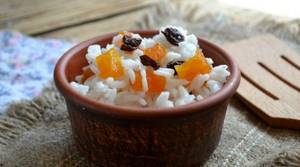
- Breakfast: boiled rice with dried apricots, hard-boiled egg, celery cocktail;
- Second meal: mint infusion, eggnog;
- Lunch: sorrel borscht, steamed pollock, squash caviar, juice;
- Afternoon snack: plums;
- Dinner: buckwheat porridge, turkey in its own juice, compote.
Tuesday

- Breakfast: baked pumpkin with apple, juice;
- Second breakfast: soy omelette, compote;
- Lunch: squash puree soup, carrot zrazy, boiled veal, tea;
- Afternoon snack: gooseberries;
- Dinner: bulgur, tea with lemon balm:;
- At night: jelly.
Wednesday

- Breakfast: rice with dried apricots;
- Second breakfast: biscuits, cranberry jelly;
- Lunch: squash soup, stewed veal, buckwheat porridge, cucumber and onion salad and greens, compote;
- Afternoon snack: broccoli omelette, green tea;
- Dinner: boiled veal salad with asparagus and olives, mint tea.
Herbal teas are an excellent replacement for coffee, milk and other diet-inappropriate drinks. After consulting with your attending physician-nutritionist, you can choose the most suitable fees for you. Many herbal remedies can provide invaluable assistance in feeding a child, as they affect lactation and the quality of breast milk in women. And they will additionally introduce the prevention of various colds without any chemical medications.
A similar diet is also successfully used for weight loss for nursing mothers who are going through the recovery process after pregnancy. A balanced diet will help you quickly and painlessly get into shape after pregnancy and childbirth.
Lactose and gluten intolerance. Lactose-free and gluten-free diet.
It often happens that in addition to lactose intolerance, gluten intolerance also occurs. In this case, it is recommended to combine a lactose-free diet and a gluten-free diet.
Today, many people prefer to adhere to this type of diet to improve skin quality, increase performance, activity, lose weight, as well as for better absorption of vitamins and microelements from food. According to doctors, such dietary restrictions are not justified if there are no indications for them, namely in the absence of lactose and gluten intolerance.
Recipes
And now we can talk about the most common and popular recipes for a lactose-free (dairy-free) diet. Based on even such a small list, it is clear how varied the diet can be.
Kissel
Ingredients:
- Starch 2 l;
- 1 liter of water;
- Half a glass of sugar;
- Apples, gooseberries, other fruits or berries.
Starch is always the basis for making jelly. And the amount of this powder will always allow you to vary what kind of dish you get: mousse, drink or dessert.
The technology is simple. Cook berry compote. Dilute starch in half a glass of cold water and pour this solution into the bubbling berry broth; stir vigorously to smooth the drink. Kissel has a calming effect on the walls of the stomach and intestines due to its viscousness, and at the same time saturates the body well. Therefore, it is very useful to take it for dinner. It will not cause bloating or gas. You can adjust the amount of sugar yourself.
